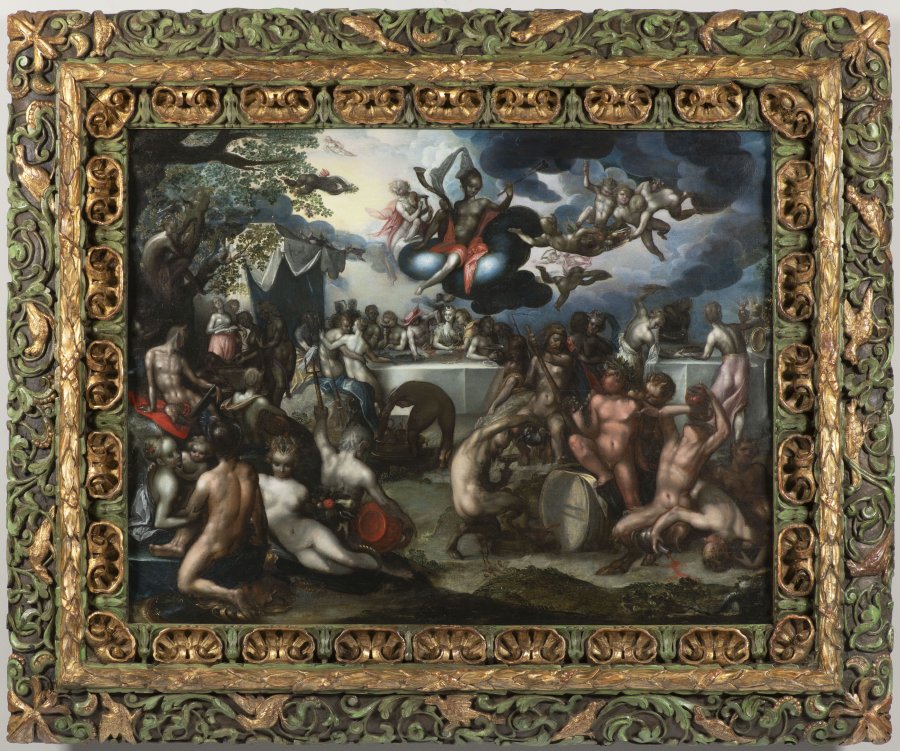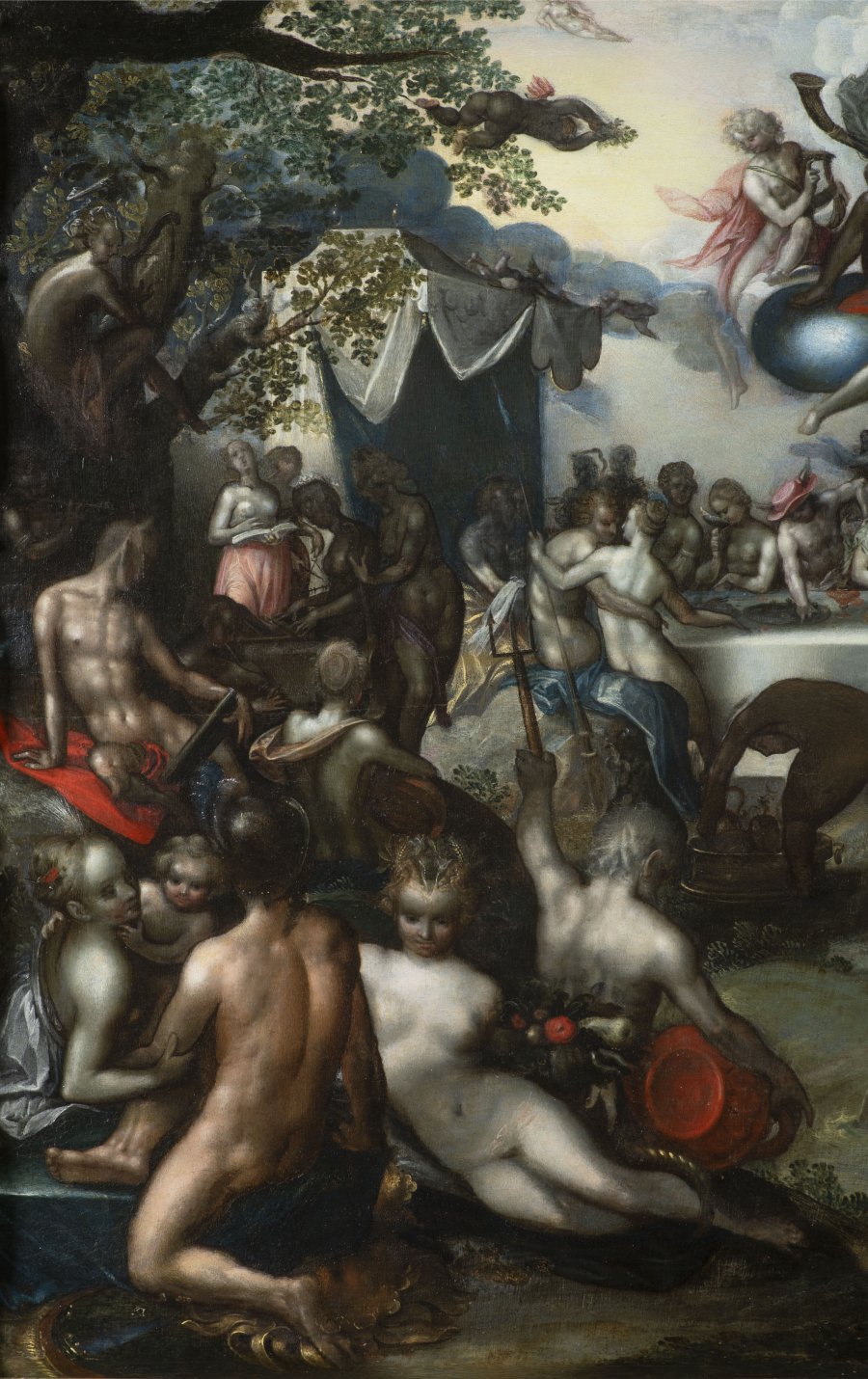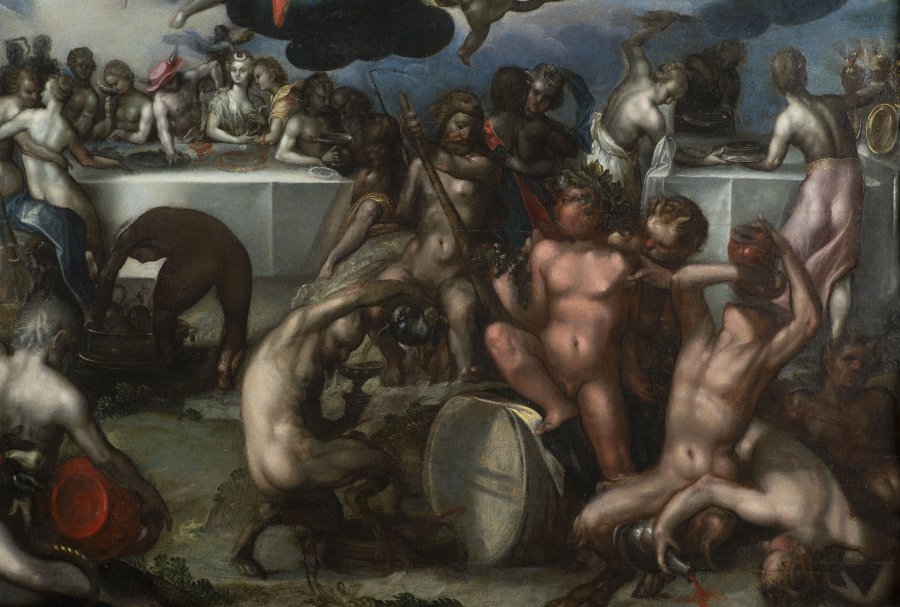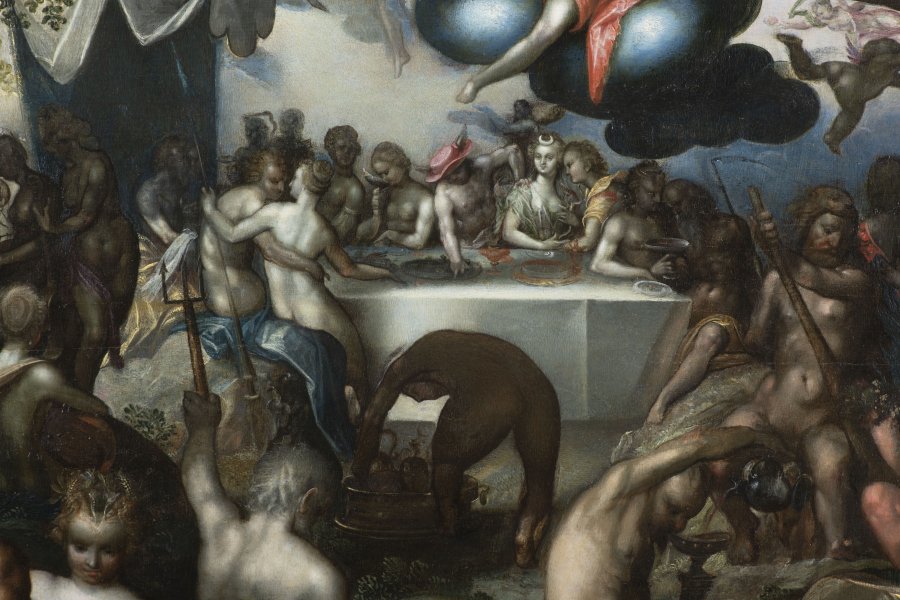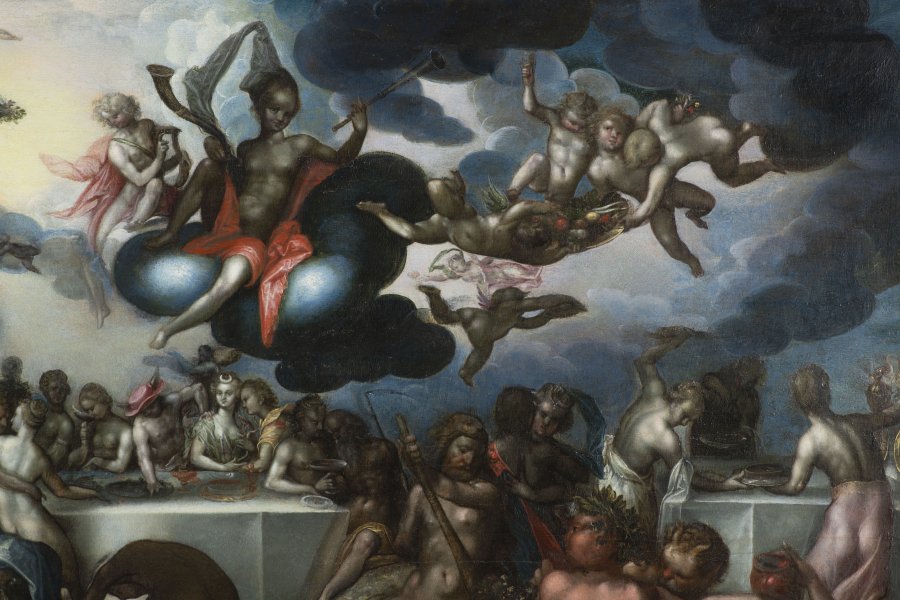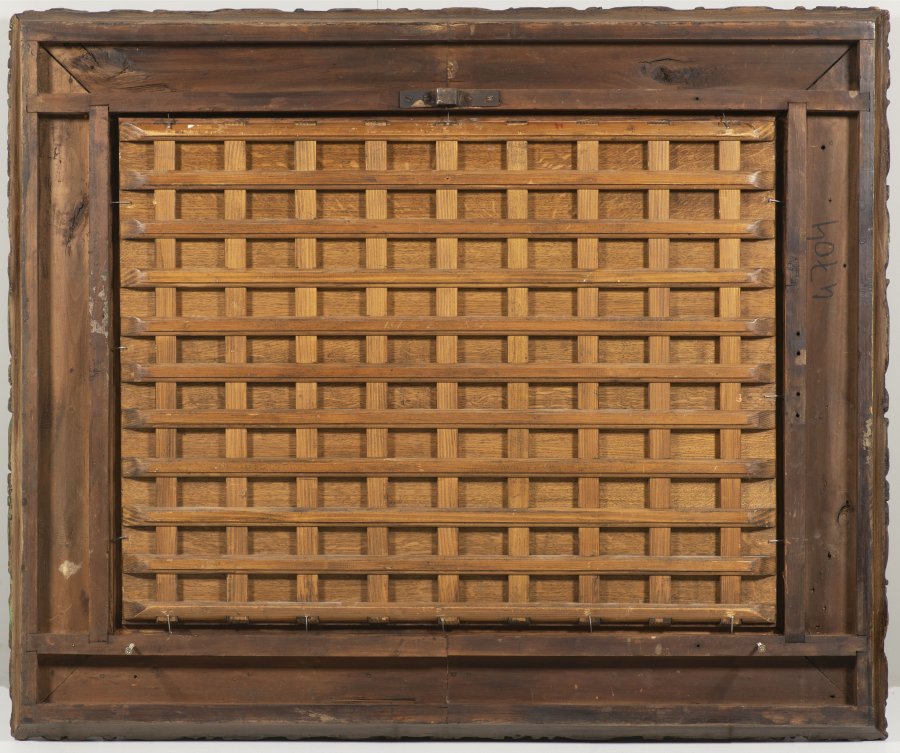Lot 05
THE WEDDING OF PELLEUS AND THETIS
Around 1610
oil on wood
66,5 x 86,5 cm (h x w)
| 27 083 €
| 33 333 €
When the sea nymph Thetis married the Thessalian hero Peleus, all the gods were invited except one - the goddess of strife Eris. She, angry at this insult, appeared anyway and caused havoc by throwing an apple with the inscription "for the fairest" into the crowd. Hera, Athena and Aphrodite vied for the prize, setting off the events that led to the Trojan War. Treated in keeping with the contemporary tendencies of Prague mannerism, the theme depicts a multitude of celebrating deities and putti enjoying the occasion, oblivious to the looming clouds. The condensed, complex scene encourages the viewer to look closely and discover the real "who's who" of ancient mythology.
Based on the style of painting, composition, and color, the work can be placed in the circle of important painters at the court of Rudolph II referred to as the Prague School of the late 16th and early 17th centuries, with most similarities to the work of Bartholomew Spranger. Spranger's most famous allegories include the large-scale canvas Triumph of Wisdom celebrating the reign of Rudolf II. The second, of the same focus, was created shortly before the artist's death in 1610 with the subject Allegory of the Turkish Wars. In the 1690s, Spranger's painting style was partly transformed by the influence of other artists working at Rudolf's court. He replaced the slender and smoothly modelled figures typical of his earlier production with figures with almost caricatured features in their faces. He modelled the incarnation using light and shadow. The dynamic luminosity of the scenes began to play a major role in his paintings.
The painting in the cold colouring of figurative painting also offers similarities with the Flemish Mannerist Joachim Wtewael, who painted social scenes in a similar composition. The work of Joachim Wtewael in the possession of the Sterling and Francine Clark Art Institute, for example, offers analogous iconography in the subject of the wedding of Péle and Thetis. Similarly, similarities in Wtewael's work to the present work can be found in the painting The Golden Age of 1605, which was part of the collection of Rudolf II of Prague.
Provenance: the Paris collection, the Prague collection
More works from auction
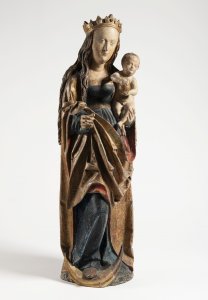
Lot 1 GOTHIC MADONNA
Starting price180 000 CZK | 7 500 €
Price realized
280 000 CZK | 11 667 €
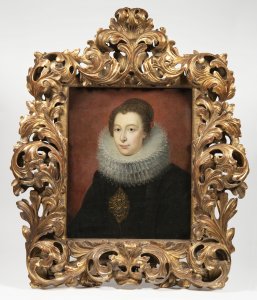
Lot 2 PORTRAIT OF A LADY
Starting price90 000 CZK | 3 750 €
Price realized
120 000 CZK | 5 000 €
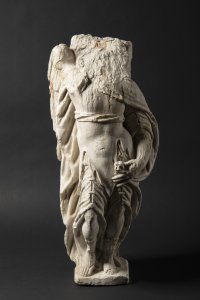
Lot 3 MANNERIST SAINT MICHAEL TORSE
Starting price40 000 CZK | 1 667 €
Price realized
120 000 CZK | 5 000 €
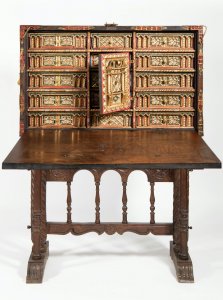
Lot 4 BARGUEÑO CABINET
Starting price90 000 CZK | 3 750 €
Price realized
160 000 CZK | 6 667 €
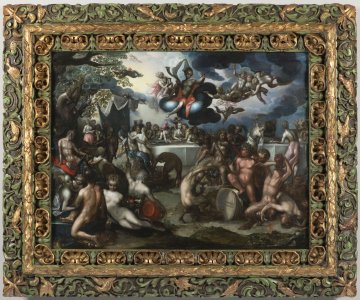
Lot 5 THE WEDDING OF PELLEUS AND THETIS
Starting price650 000 CZK | 27 083 €
Price realized
800 000 CZK | 33 333 €
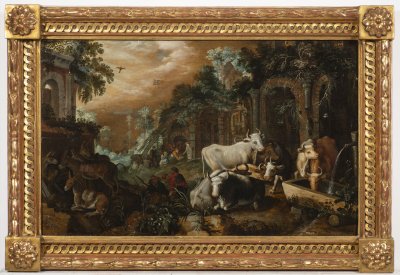
Lot 6 PASTORAL SCENE
Starting price380 000 CZK | 15 833 €
Price realized
420 000 CZK | 17 500 €
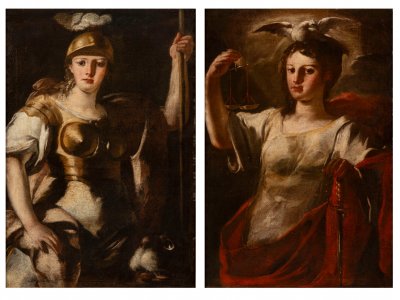
Lot 7 PAIR OF ALLEGORIES
Starting price160 000 CZK | 6 667 €
Price realized
170 000 CZK | 7 083 €
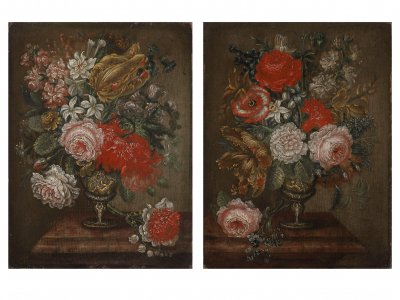
Lot 8 PAIRED FLORAL STILL LIFES
Starting price35 000 CZK | 1 458 €
Price realized
35 000 CZK | 1 458 €
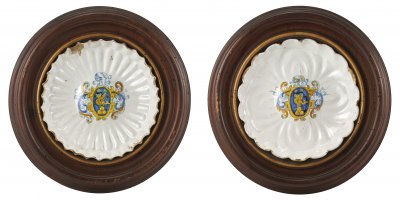
Lot 9 PAIR OF CERAMIC PLATES
Starting price25 000 CZK | 1 042 €

Lot 10 LARGE PROSPECTUS OF PRAGUE FROM PETRIN HILL
Starting price40 000 CZK | 1 667 €
Price realized
75 000 CZK | 3 125 €
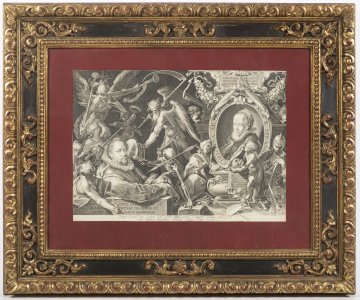
Lot 11 BARTHOLOMEUS SPRANGER AND CHRISTINA MULLER
Starting price25 000 CZK | 1 042 €
Price realized
33 000 CZK | 1 375 €
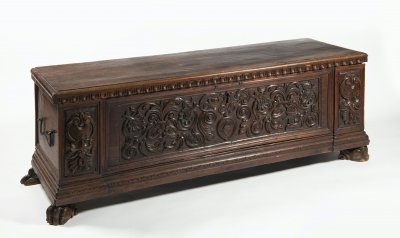
Lot 12 MANNERIST CHEST
Starting price24 000 CZK | 1 000 €

